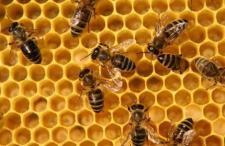Less Common Approaches Used To Treat Wound Infection
The typical treatment for infected wounds continues to include antimicrobial therapy, however other therapies are gaining in popularity due to the rise in antibiotic resistance.
Maggots
Maggot Debridement Therapy is the medical use of live maggots (fly larvae) for treating non-healing wounds.
Maggot therapy has also been around for a long time, going all the way back to the Napoleonic war. Battle surgeons noted that patients whose wounds became infested with maggots healed better and more quickly. When antibiotics came on the scene in World War 2, maggot therapy faded into obscurity. Today, however, maggots are enjoying resurgence in popularity.
Medicinal maggots are “raised” in a sterile environment and do not feed or reproduce on live tissue. What do maggots do? They feed on bacteria, digesting the bacteria in their gastrointestinal tract. They also secrete a substance which helps to dissolve necrotic tissue, disinfects the wound and acts as a stimulant for wound healing. Maggot therapy is cost- effective in comparison to other wound treatments. Best of all, maggot therapy is also effective in treating infections caused by resistant organisms, such as MRSA
Leeches
In the 19th century, physicians routinely used leeches in everyday treatment for a wide variety of ailments. However, rapid advances in medicine saw leech use fall by the wayside. Today, although leeches are rarely used, leech therapy has a place in the treatment of a specific population of patients- those who have venous congestion following transplantation or reattachment surgery. Leeches are useful in treating patients with venous- compromised tissue because their saliva is rich in:
- hyaluronidase, which has antibiotic properties and also assists in spreading the leech saliva through the affected wound tissue
- histamine-like vasodilator, which encourages local bleeding
- hirudin, a thrombin inhibitor
- local anesthetic properties, which can help in pain control
Thus, leeches may be used in patients with venous issues who also have infection. One drawback to the use of leeches is the high incidence of Aeromonas hydrophila infection, which may affect as many as 20% of patients. Prophylactic antibiotics reduce this risk. Leeches were cleared for use by the FDA in 2004, around the same time as maggots received approval.
Honey

Don’t let the title of this article frighten you- bees are not used in wound treatment; rather, the fruit of their labor is used. Honey is an ancient wound therapy dating back centuries. Today, honey is again becoming more popular in treating wounds (particularly infected wounds), due to the following properties:
- honey acts as a sealant, keeping the wound bed moist and free of any contamination
- honey has a high sugar content and also contains amino acids, vitamins and minerals that aid in healing and tissue growth
- honey is hyperosmotic, killing microorganisms that cannot survive in such an environment
- honey contains the enzyme glucose oxidase, which leads to the production of hydrogen peroxide when exposed to oxygen in the air
- honey acts as a debriding agent
Manuka is a medicinal honey that has enhanced antimicrobial properties and has been approved for use in the US since 2007. Numerous studies support the use of medicinal honey in the treatment of infected wounds.
These are just a few alternative options to the use of antibiotics for the treatment of wound infections. Due to the increase in antibiotic-resistant organisms, research is focusing more and more on alternative therapies.
Interested in learning more about wound care and wound care certification? Visit WoundEducators.com and browse through the wound care certification courses for information on a comprehensive range of education options to suit healthcare professionals across the full spectrum of qualifications and experience.
Source:
Dente, K. (2007). Alternative treatments for wounds: leeches, maggots, and bees. Medscape. http://www.medscape.com/viewarticle/563656
Simon, A, Traynor, K, Santos, K, Blaser, G, Bode, U & Molan, P. (2009). Medical honey for wound care- still the latest resort? Evid Based Complement Alternat Med. 2009 June; 6(2): 165–173. http://www.ncbi.nlm.nih.gov/pmc/articles/PMC2686636/

I remember using maggots at Boston City Hospital back in. Early 1960’s iWhat goes around comes around!! Very interesting!
I know about leeches being used a treatment for wound infection but the maggots are totally news to me! I didn’t know they can be utilized as treatment for infected wounds since most people know that maggots are dirty and unfavorable. This article is very informative as infection is a common complication of wound if left untreated, or if treatment is neglected.
Hope further studies can be made about maggots as treatment for wound infection.